Deformities of Skeleton-Causes and Examples
The human skeleton supports an upright body. Sometimes, our skeletal system becomes weak. It results in deformations.
Skeletal anomalies include conditions affecting the bones and joints, such as those in the arms, legs, and back. The effects of genetic disorders on bones and joints can vary greatly. Different bones and joints are affected by thousands of different types of genetic skeletal disorders.
Causes Of The Deformation
There are different causes of the deformation:
Genetic Deformities
There are the following genetic abnormalities:
Cleft palate: In this case, palatine processes of the maxilla and palatine fail to fuse. An opening is left between the oral and nasal cavities. It affects the sucking of food. It can cause inhalation of food into the lungs causing aspiration pneumonia,
Microcephaly: The small-sized skull is caused by some genetic defect.
Arthritis: It is composed of over 100 different types of inflammatory or degenerative diseases. These diseases damage the joints. Osteoarthritis (O.A) is the most common chronic arthritis. It is a degenerative joint disease. It is also caused by a genetic defect.

Hormonal Deformities
Osteoporosis is a group of diseases in which there is more deposition of bone than bone deposits (stores). The bone mass is reduced. But the chemical composition of the matrix remains normal. It is caused due to decreased estrogen levels.
So osteoporosis mostly occurs in aged women. Some other factors like insufficient exercise, a diet poor in calcium and protein, smoking, etc also promote osteoporosis. Estrogen replacement therapy (ERT) is the best protection against osteoporotic bone fractures.
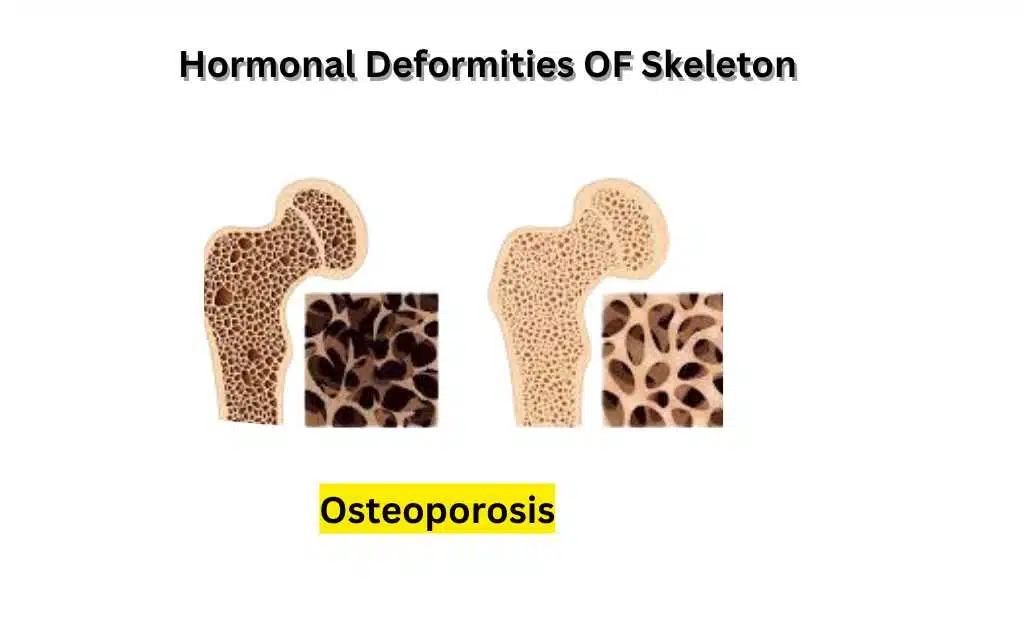
Nutritional Deformities
There are the following nutritional bones abnormalities:
Osteomalacia (soft bones): Osteomalia is several disorder. In this case, the bones receive inadequate minerals. In this disease, calcium salts are not deposited. So bones become soft and weak. Weight-bearing bones of the legs and pelvis bend and deformed. The main symptom is a pain when weight is put on affected bones.
Rickets: It is a disease of children. In this case, the children have bowed legs and deformed pelvis. It is caused by a deficiency of calcium in the diet or vitamin D deficiency. It is treated by giving children milk with vitamin D’ and exposing their skin to sunlight.
Disc Slip
The displacement of the intervertebral disc due to rupturing of the outer membrane is called a disc. An Intervertebral disc is present between two vertebrae of the vertebral column. This intervertebral disc is a cushion-like pad. The discs act as shock absorbers during walking, jumping, and running. It is also used to bend laterally.
This disc is composed of two parts:
Nucleus pulposus: The inner semi-fluid of the discs is called the nucleus pulposus. This fluid acts as a rubber ball. It gives disc elasticity and compressibility.
Annulus fibrosus: The outer part of the discs is composed of the outer ring, fibrocartilage called the annulus fibrosus. The annulus fibrosus holds the successive vertebrae together.
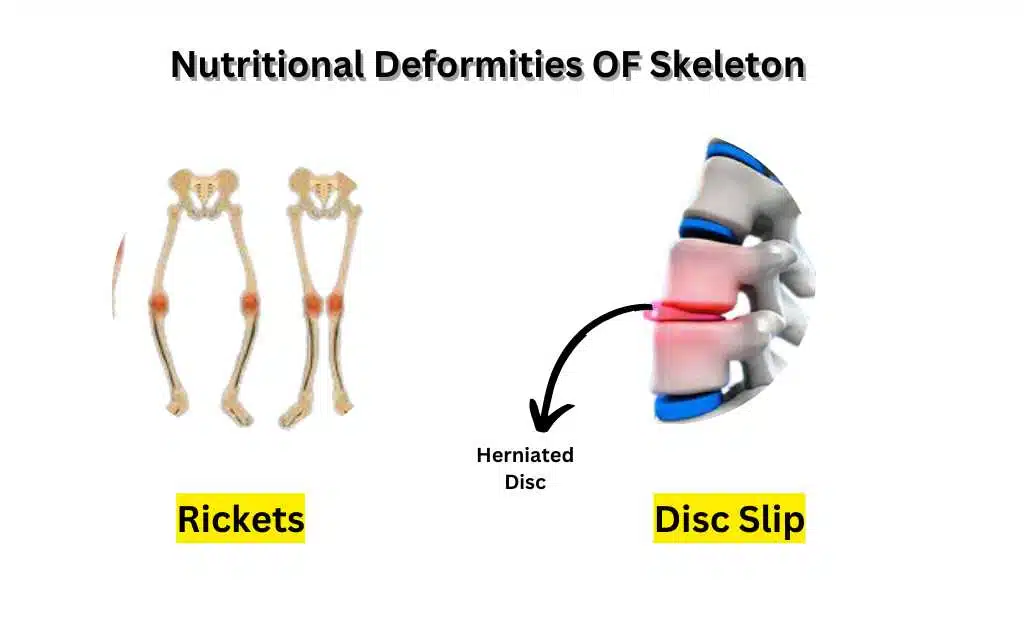
Mechanism Of Disc Slip
Severe or sudden physical trauma to the spines causes a herniation. For example, bending forward while lifting a heavy object. It can cause herniation of or more discs. The annulus fibrosus is ruptured in the herniated disc (commonly known as slipped disc).
It is followed by the protrusion of the spongy nucleus pulposus. This protrusion presses on the spinal cord or spinal nerves. It causes severe pain. It can also destroy these nervous structures.
Treatment of Disc Slip
Disc slip is treated with bed rest, traction (pulling), and painkiller. If this fails disc may be removed surgically.
Spondylosis: This disease causes immobility and fusion of the vertebral joint. Sciatica causes stabbing pain. This pain radiates over the course of the sciatic nerve. The sciatic nerve supplies the thigh muscle.
Causes of Spondylosis/Sciatica
Sciatica is caused due to injury of the proximal sciatic nerve. This injury is caused due to:
- Falling somewhere
- Herniated disc
- Improper administration of an injection into the buttock.
Effects depend on the injury of the nerve root. Sometimes, the sciatic nerve is completely transected Sciatica causes several lower limb impairments. Foot ankle movements are lost. Recovery from sciatic injury is slow and incomplete. Now the legs become nearly useless. The legs cannot be flexed. So all foot-ankle movements are lost. Recovery from sciatica is slow and incomplete.
Arthritis
Arthritis is an inflammatory or degenerative disease that damages joints. It causes pain, stiffness, and swelling of the joint. Bacteria cause acute forms of arthritis. So it is treated with antibiotics. The membrane lining the Joint becomes thick due to arthritis. Thus flu production is decreased. It increases friction in joints. This friction causes pain and inflammation. There is three chronic arthritis:
- Osteoarthritis
- Rheumatoid arthritis
- Gouty arthritis

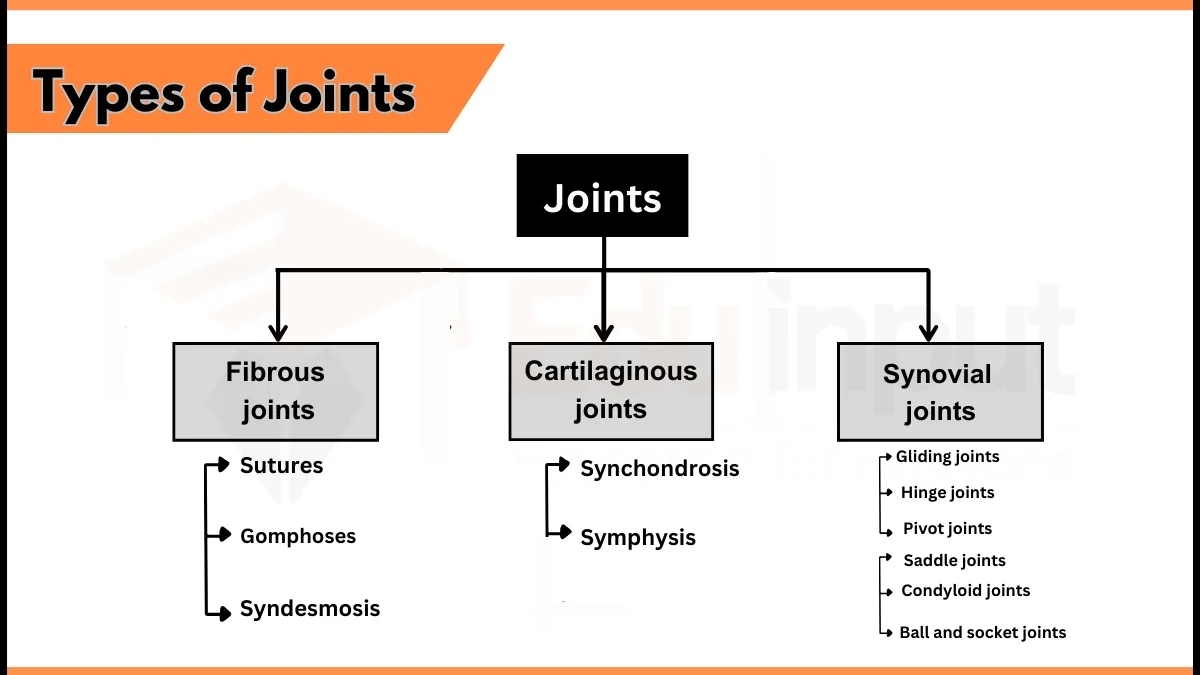
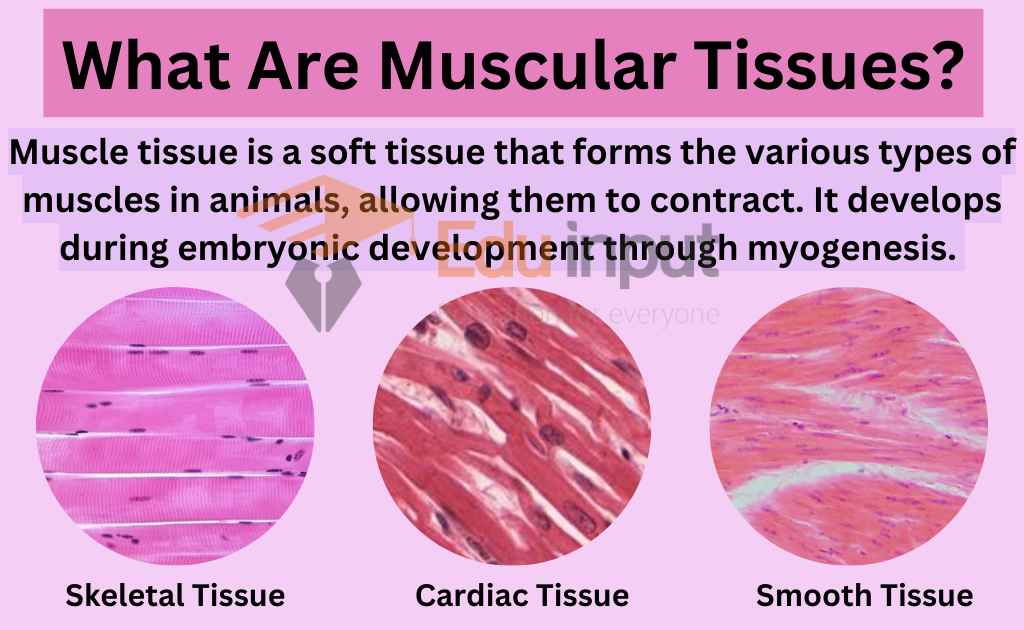
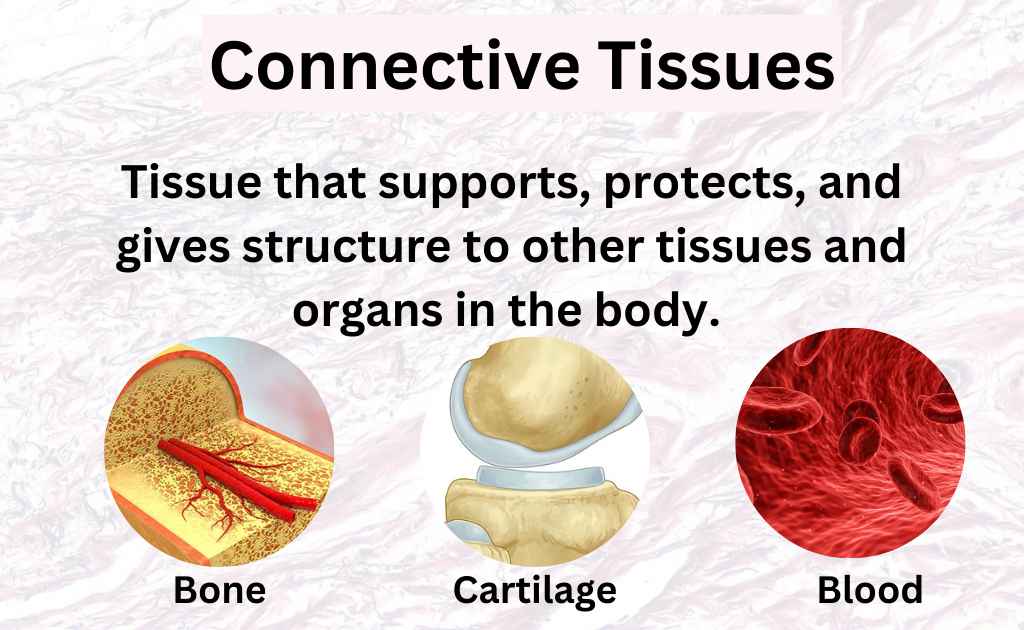



Leave a Reply